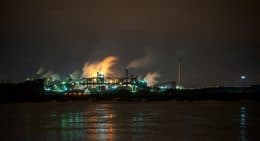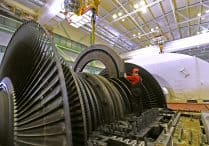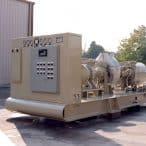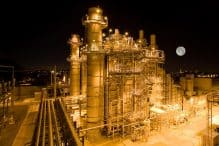Although there is variation from facility to facility, the layout of gas turbine power plants plays an important role in the operations of the power plant. Here is a breakdown of common power plant layouts and how they affect the efficiency of the plant.
How Gas Turbine Plants Operate
The particular operations of a gas turbine power plant influence the layout of an operational site. Gas turbines are combustion engines that use natural gas or other liquid sources of energy to create mechanical energy. The mechanical energy is then used to produce electrical energy with a generator. Gas turbines are composed of the following three major parts:
- The compressor, which uses pressurized air to rotate blades in the turbine
- The combustor, which heats gasses to temperatures as high as 1400-1500 degrees Celcius
- The turbine, which is composed of blades which rapidly rotate and create mechanical energy.
Gas turbine power plants have one of the highest rates of efficiency when it comes to converting fossil fuels into electrical power, and can offer shorter gestation times compared to other types of facilities.
Common Layout for Power Plants
Because of the interconnecting of air, gas, and other circuits, the layout of a gas turbine power plant must be carefully considered in order to minimize waste and inefficiency. In general, accommodations for the turbine housing take up the majority of the space in a plant, with the auxiliaries being the main building. However, fuel oil storage tanks are generally placed adjoining the turbine housing, with intercoolers, combustion chambers, waste heat boilers, heat exchangers, and the sometimes complicated ductwork taking up the rest of the building.
Selecting a Gas Turbine Power Plant Site
Before the layout of a gas turbine power plant can be designed, the proper site for the plant must be selected. There are a number of variables that go into this decision, as certain factors may make the plant less efficient or more costly. The site should be as close as possible to the load center to minimize transmission costs. Land should be relatively cheap as gas turbines can take up a significant area, and also so that the plant and facility can be expanded if necessary. It should be in a location relatively far from populated areas due to the noise of the operation, but there should be easy transportation for workers as well. Finally, plants should be built in locations where fuel is available for a reasonable rate, and where the land has a high bearing capacity, as the plant’s vibrations and other operations will create a significant load.
Advantages of Gas Turbine Power Plants
Gas turbine power plants can offer a relatively compact and cost-efficient means of producing energy from fossil fuels. Because gas turbines do not require boilers or feed water arrangements, they are generally smaller than steam turbine plants of the same capacity. They are also generally simpler in design for these reasons. Gas turbine power plants can also require smaller maintenance charges, as well as initial and operating costs that are lower than those of steam power stations. Unlike other power plant systems, gas turbine power plants can also be started in cold weather conditions.
Disadvantages of Gas Turbine Power Plants
Although gas turbine power plants are more compact, steam power plants often have longer lifespans. This is because the high temperature of the combustion chamber (3000° F) can reduce the lifespan of the plant. Because exhaust gases from gas turbine power plants contain sufficient heat, the efficiency of the plants may be as low as 20 percent.
To maximize the efficiency of a gas turbine power plant, the layout must be taken into consideration. However, it is equally important to ensure that the controls of a plant are ensuring it operates safely and at full capacity. For more information about maximizing the efficiency of your plant with the most up to date control systems, reach out to our team today by requesting a quote online or by calling Petrotech at 504-620-6600.



